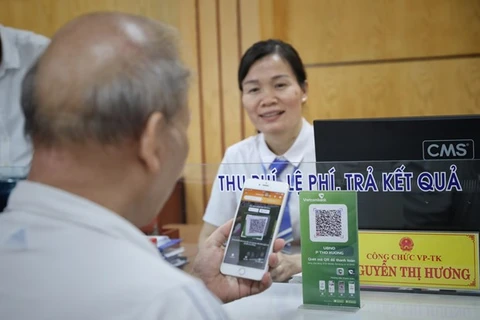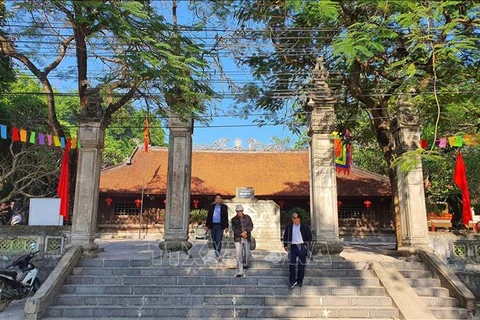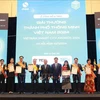 A view of Bac Giang city (Photo: baobacgiang.com.vn)
A view of Bac Giang city (Photo: baobacgiang.com.vn) Bac Giang (VNA) – The northern province of Bac Giang has continued its efforts to accelerate digital government development and smart city building, according to Director of the provincial Department of Information and Communications Tran Minh Chieu.
The department is managing to maintain and effectively operate the data integration centre, and shared information systems of the province such as the local government service platform (LGSP), the online video conferencing platform, the reporting and information system, and the portal, among others.
The department has directed telecommunications businesses to focus on completing information infrastructure and speeding up the provision of Mobile Money service to locals.
It has coordinated with relevant agencies to complete and operate projects on building a digital data warehouse and an information system for settling administrative procedures.
Online teaching platforms, a national digital education resource repositories will be developed in local schools and education establishments, while e-lecture databases and online course services will be provided, the official said.
According to Chieu, the provincial Department of Planning and Investment has encouraged local businesses to participate in the Small and Medium Enterprises Support Programme for Digital Transformation (SMEdx), aiming to raise business awareness of digital transformation.
Bac Giang has set the target to ensure the rate of administrative dossiers processed online reaches 50%; and to mobilise the participation of socio-political organisations and businesses in popularising and promoting the use of online public services.
In the first nine months of 2022, the provincial Department of Information and Communication maintained and leased a dedicated data transmission line developed by the Vietnam Posts and Telecommunications Group (VNPT) connecting from the provincial data integration centre to 10 districts and Bac Giang city, 209 communes and wards, and 10 land management offices across the locality; and a wide area network (WAN) transmission line connecting departments and sectors under the provincial People’s Committee.
The LGSP has connected to the national government service platform (NGSP), which provides nine services including social insurance; business registration; national database on population; civil; judicial record; granting budget relationship codes; legal documents; public postal service and shared software system.
Bac Giang's digital data warehouse was put into operation on October 10, focusing on integrating and storing databases from specialized databases and data stores of the locality; processing and cleaning data, and forming six shared software systems.
The provincial People's Committee has directed the strict implementation of all the 25 essential public services at Levels 3 and 4 which were integrated into the National Public Service Portal in order to serve the demand of the people.
According to Vice Chairman of the provincial People’s Committee Mai Son, in the first half of 2022, Bac Giang strengthened the application of information technology in operations of State agencies.
The online video conferencing system has been deployed to connect the province with Bac Giang city and nine districts, and 100% of the communes, wards and townships, with a total of 277 connection points; as well as 21 education facilities and 13 healthcare stations. Along with upgrading the multipoint control unit (MCU) of the system, the province has invested in equipment system and provided resources to set up online meeting rooms for 20 connection points in departments and sectors, along with a MCU system serving video conferencing throughout the province.
The electric single-window system has been launched in all departments, agencies and communes of Bac Giang, together with a connection system linking the administrations at provincial, district and communal levels, and another linking the administrations at all levels with the business registration system.
A software to manage documents has also been applied with integrated digital signatures, through which 6,890 digital certificates have been issued, with 4,924 to individuals, 1,964 to organisations, and two to equipment./.
























